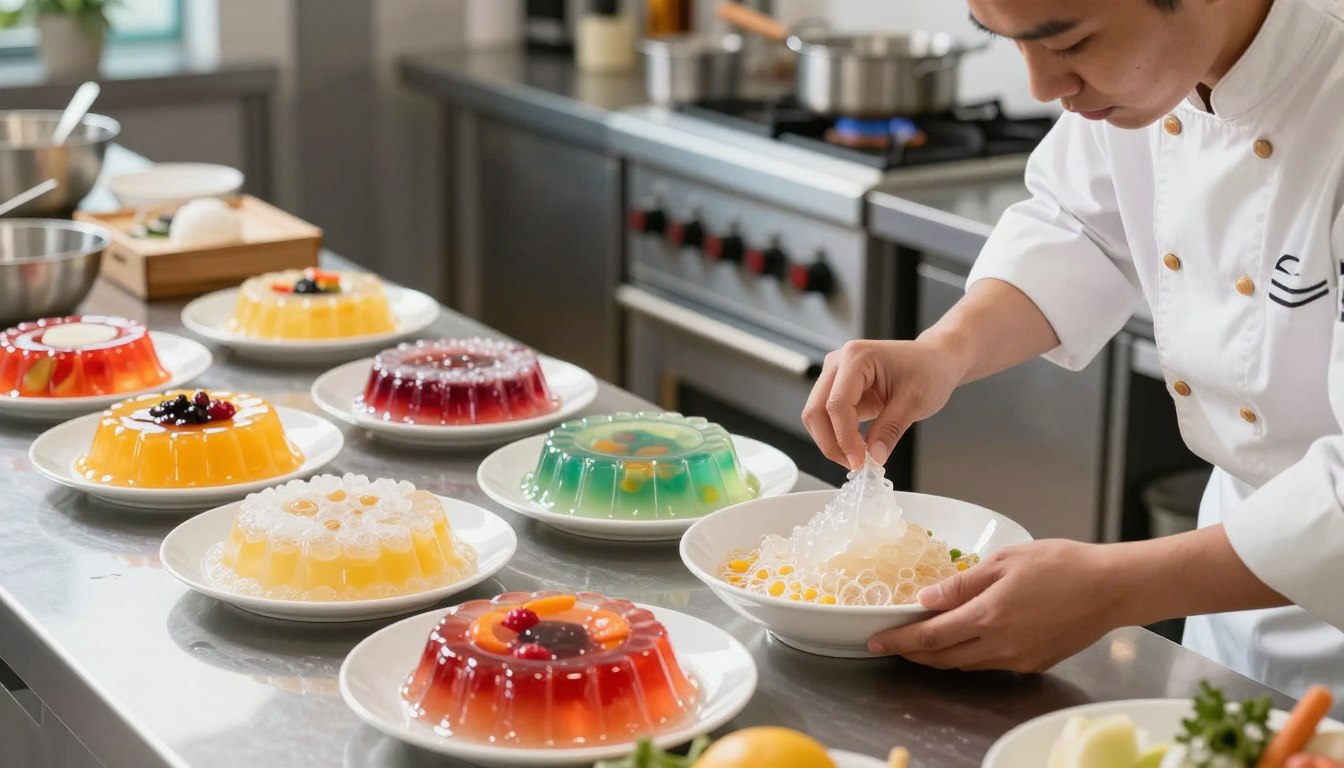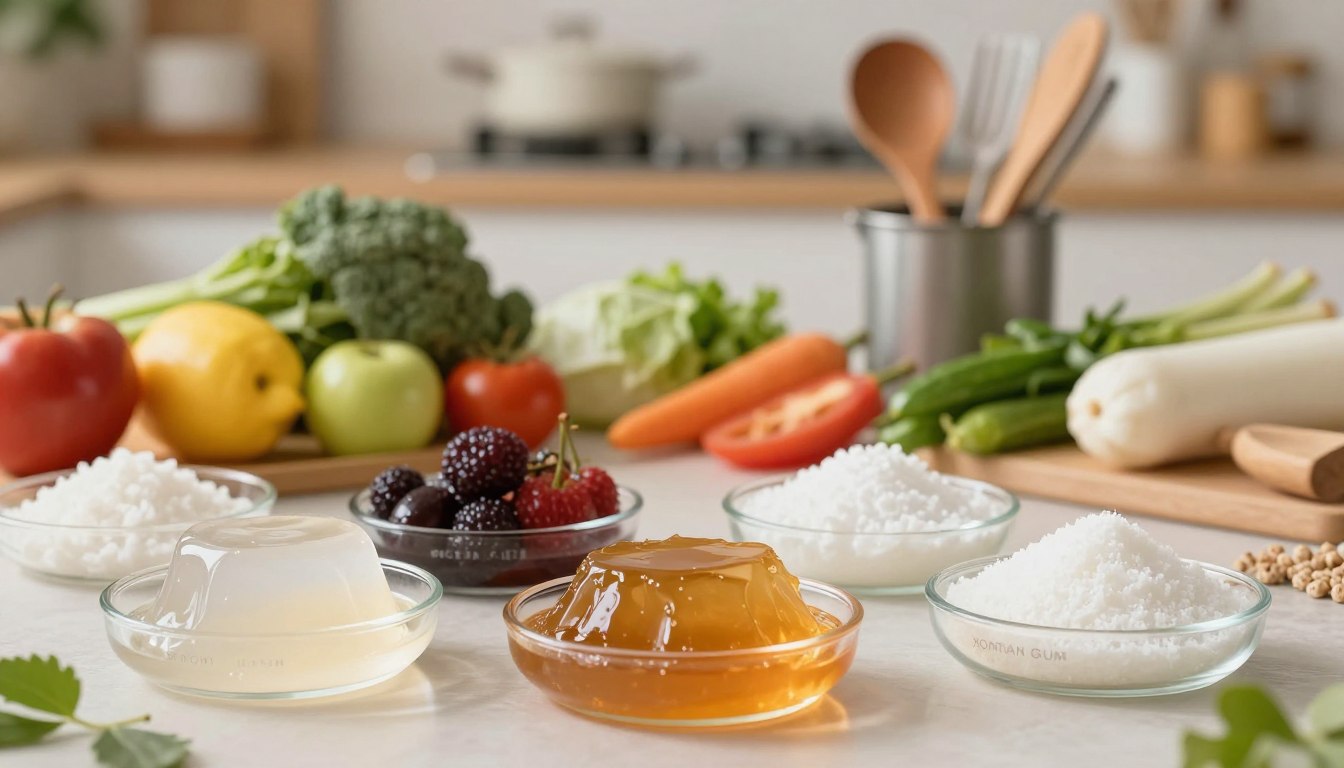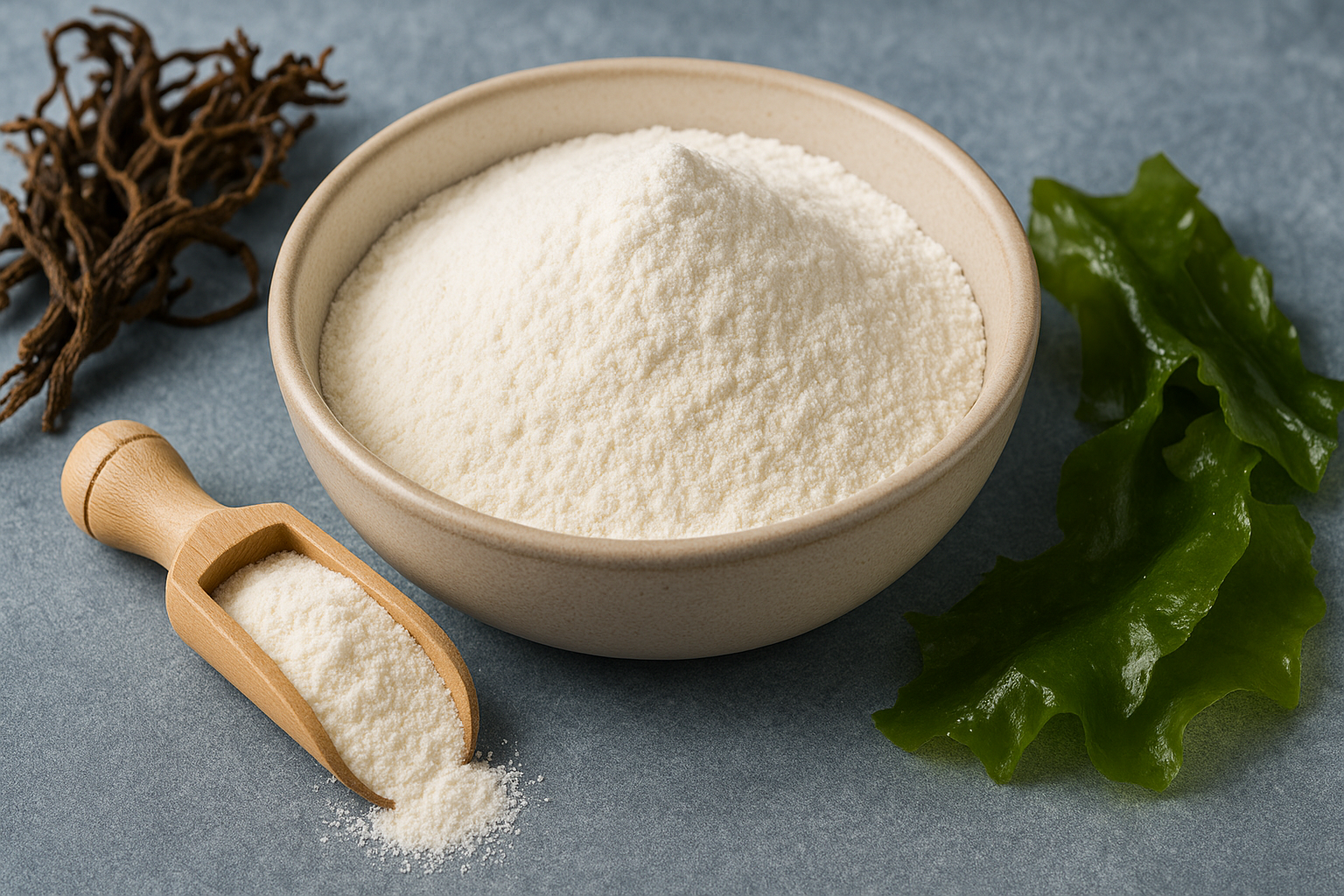
The Next Big Thing in the Hydrocolloid Foods Market: A Back Pocket Guide
SUBSCRIBE TO OUR BLOG
Promotions, new products, and recipes.
The global hydrocolloids foods market is set to achieve a valuation of US $8.7 Billion by 2022, with a projected compound annual growth rate (CAGR) of 5.2% during the ten year forecast period from 2022 to 2032. As per Future Market Insights (FMI), the hydrocolloids foods market constituted approximately 10% of the global food additives market, which reached a value of US $83 Billion in 2021. The anticipated market size by 2032 is estimated to be US $14.5 Billion, reflecting a 5.2% increase from the year 2022.
Hydrocolloids play an important role in a wide range of processed food items, taking on a variety of forms and used in a number of food applications. They are extensively utilized to improve the texture and consistency of bakery ingredients, ice cream, dairy products, and more. The growing demand for hydrocolloids in the food industry has been a key driver of the market's growth. Moreover, their easy availability from multiple sources makes them reliable and cost-effective substitutes for natural ingredients.
FMI attributes the market's growth to heightened health consciousness and the growing demand for confectionery and bakery products. The market is expected to witness significant expansion due to the increasing preference for natural food additives and a rising awareness of health and nutrition worldwide. In particular, the need to combat obesity, diabetes, and food allergies is driving the demand for fat substitutes, further bolstering market growth.
As the food hydrocolloid market has been witnessing significant growth in recent years, this trend is expected to continue well into the future. Hydrocolloids are polymers that have the ability to form a gel-like substance when combined with water, making them essential ingredients in various food products. They play a crucial role in improving texture, stability, and overall quality of food items, which has led to their widespread adoption across the food industry.
Types of Hydrocolloids:
Alginates: Sodium alginate, sourced from brown seaweed, has found extensive usage in the production of beverages, dressings, and bakery products. Its natural origin and emulsifying capabilities make it appealing to health-conscious consumers.
Carrageenan: Carrageenan, extracted from seaweed, is widely used as a stabilizer and thickener in dairy and meat products. The growing demand for convenience foods has fueled its adoption in the processed food sector.
Gelatin Gum: Gelatin gum has been one of the traditional hydrocolloids widely used in the food industry due to its gelling properties. However, its popularity is witnessing a slight decline due to the rising demand for plant-based and microbial-sourced hydrocolloids.
Guar Gum: Guar gum is valued for its thickening and stabilizing properties, making it an essential component in various food applications, including sauces, dressings, and dairy products.
Pectin: Pectin, derived from fruits, has gained significant traction in the food industry, particularly in the production of jams, jellies, and confectionery products. Its natural origin and gelling capabilities make it a sought-after ingredient for health-conscious consumers.
Tara Gum: Tara gum has gained prominence as a natural stabilizer in dairy products and processed foods, with its demand driven by the increasing need for clean label ingredients.
Sunflower Lecithin and Others: Sunflower lecithin and other hydrocolloids like locust bean gum, agar, and gum Arabic are also witnessing growing interest in the food industry, owing to their unique functionalities and eco-friendly nature.
Xanthan Gum: Xanthan gum has become a staple in gluten-free products, providing stability and viscosity. The increasing demand for gluten-free alternatives in bakery and dairy products has boosted the usage of xanthan gum.
Sunflower Lecithin and Others: Sunflower lecithin and other hydrocolloids like locust bean gum, agar, and gum Arabic are also witnessing growing interest in the food industry, owing to their unique functionalities and eco-friendly nature.
Applications of Hydrocolloids
Dairy and Frozen Products: Hydrocolloids are extensively used in the dairy industry to stabilize and improve the texture of products like yogurt, ice cream, and cheese. The growth in the consumption of dairy and frozen desserts is expected to drive the demand for hydrocolloids in this segment.
Bakery and Confectionery: In the bakery and confectionery sector, hydrocolloids play a vital role in providing structure and texture to products like cakes, pastries, and gummies.
Beverages: The beverage industry relies on hydrocolloids for stabilization, emulsification, and texture enhancement in products such as juices, soft drinks, and plant-based milk alternatives.
Meat and Seafood Products: Hydrocolloids are used in meat and seafood processing to improve water retention, texture, and binding properties, resulting in better product quality and reduced cooking losses.
Oils and Fats: Hydrocolloids are utilized to stabilize emulsions in salad dressings, margarine, and other fat-based products, contributing to improved appearance and mouthfeel.
Others: Hydrocolloids find applications in various other food products, including soups, sauces, dressings, and ready-to-eat meals, enhancing their stability and sensory attributes.
Functions of Hydrocolloids
Thickeners: Hydrocolloids are widely used as thickeners to increase the viscosity and consistency of food products, enhancing their texture and mouthfeel.
Stabilizers: Stabilizing agents help maintain the uniformity and integrity of food formulations, preventing ingredient separation and maintaining product quality over time.
Coating Materials: Hydrocolloids are utilized as coating agents in various food items, providing a protective layer, improving appearance, and extending shelf life.
Fat Replacers: In low-fat or fat-free products, hydrocolloids can act as fat replacers, mimicking the texture and mouthfeel of full-fat counterparts.
Gelling Agents: Hydrocolloids capable of forming gels are essential for creating structured and jellied products like desserts and gummy candies.
Sources of Hydrocolloids:
Plants: Hydrocolloids sourced from plants, such as pectin and guar gum, are witnessing significant demand due to the clean label trend and consumer preference for natural ingredients.
Microbials: Hydrocolloids produced through microbial fermentation processes are gaining attention as sustainable and consistent alternatives.
Seaweeds: Hydrocolloids derived from seaweed, like carrageenan and alginate, are growing in popularity due to their renewable and eco-friendly nature.
Animals: Although declining in popularity due to ethical and religious concerns, hydrocolloids like gelatin derived from animal sources are still used in specific applications.
Synthetic: Synthetic hydrocolloids, while available, are gradually being replaced by natural alternatives as consumer demand for clean label products rises.
Regional Insights
North America: The North American food hydrocolloid market is driven by the growing demand for convenience foods, clean label ingredients, and gluten-free products.
Europe: In Europe, the increasing awareness of natural ingredients and sustainable food production is boosting the adoption of plant-based and seaweed-derived hydrocolloids.
Asia Pacific: The Asia Pacific region is experiencing substantial growth in the food hydrocolloid market due to the rising population, urbanization, and changing consumer preferences towards processed foods.
Rest of the World: The Rest of the World regions, including Latin America and the Middle East, are witnessing an increasing demand for hydrocolloids as food manufacturers seek to improve product quality and expand their offerings.
In conclusion, the food hydrocolloid market is evolving rapidly, driven by changing consumer preferences, increasing demand for clean label products, and the growing popularity of convenience foods. As the food industry continues to innovate and diversify, hydrocolloids will remain vital ingredients, enabling the production of a wide range of high-quality, stable, and appealing food products across the globe.
It's important to note that while this article provides insights based on existing trends up to 2021-2022, the food industry is dynamic, and newer developments and innovations are likely to shape the hydrocolloid market beyond 2032.
Please share with us in the comments section below!


|
About the Author Ed is the founder of Cape Crystal Brands, editor of the Beginner’s Guide to Hydrocolloids, and a passionate advocate for making food science accessible to all. Discover premium ingredients, expert resources, and free formulation tools at capecrystalbrands.com/tools. — Ed |
Enjoyed this post? Subscribe to The Crystal Scoop
Food-science tips, ingredient know-how, and recipes. No spam—unsubscribe anytime.
- Choosing a selection results in a full page refresh.



